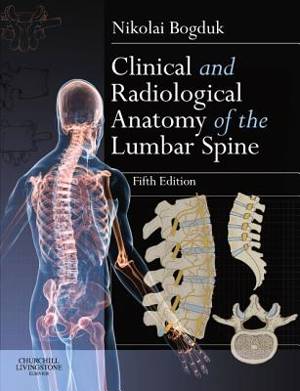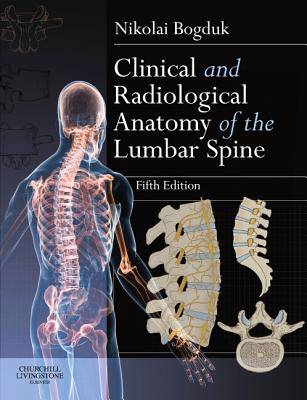
Door een staking bij bpost kan je online bestelling op dit moment iets langer onderweg zijn dan voorzien. Dringend iets nodig? Onze winkels ontvangen jou met open armen!
- Afhalen na 1 uur in een winkel met voorraad
- Gratis thuislevering in België vanaf € 30
- Ruim aanbod met 7 miljoen producten
Door een staking bij bpost kan je online bestelling op dit moment iets langer onderweg zijn dan voorzien. Dringend iets nodig? Onze winkels ontvangen jou met open armen!
- Afhalen na 1 uur in een winkel met voorraad
- Gratis thuislevering in België vanaf € 30
- Ruim aanbod met 7 miljoen producten
Zoeken
€ 61,45
+ 122 punten
Uitvoering
Omschrijving
Clinical and Radiological Anatomy of the Lumbar Spine 5e continues to offer practical, comprehensive coverage of the subject area in a unique single volume which successfully bridges the gap between the basic science of the lumbar region and findings commonly seen in the clinic. Now with a greatly increased imaging section, this book will be ideal for students and practitioners of chiropractic, osteopathic medicine and osteopathy, physiotherapy, physical therapy, pain medicine and physiatry worldwide.
- Presents a clear and accessible overview of the basic science relating to the structure and function of the lumbar spine
- Written by an internationally renowned expert in the fields of both clinical anatomy and back pain
- Describes the structure of the individual components of the lumbar spine, as well as the intact spine
- Goes beyond the scope of most anatomy books by endeavouring to explain why the vertebrae and their components are constructed the way they are
- Provides an introduction to biomechanics and spinal movement with special emphasis on the role of the lumbar musculature
- Explores both embryology and the process of aging in the context of spinal structure and function
- Explores mechanical back pain within the context of the structural and biomechanical principles developed earlier in the volume
- Extensive reference list allows readers seeking to undertake research projects on some aspect of the lumbar spine with a suitable starting point in their search through the literature
- Perfect for use both as an initial resource in undergraduate training in physiotherapy and physical medicine or as essential reading for postgraduate studies
- Greatly expanded section on medical imaging
- Increased elaboration of the regional anatomy of the lumbar spine
- Includes chapter on reconstructive anatomy, which provides an algorithm showing how to put the lumbar spine back together
- Presents an ethos of 'anatomy by expectation' - to show readers what to expect on an image, rather than being required to identify what is seen
Specificaties
Betrokkenen
- Auteur(s):
- Uitgeverij:
Inhoud
- Aantal bladzijden:
- 260
- Taal:
- Engels
Eigenschappen
- Productcode (EAN):
- 9780702043420
- Verschijningsdatum:
- 9/02/2012
- Uitvoering:
- Paperback
- Formaat:
- Trade paperback (VS)
- Afmetingen:
- 189 mm x 246 mm
- Gewicht:
- 6189 g

Alleen bij Standaard Boekhandel
+ 122 punten op je klantenkaart van Standaard Boekhandel
Beoordelingen
We publiceren alleen reviews die voldoen aan de voorwaarden voor reviews. Bekijk onze voorwaarden voor reviews.











